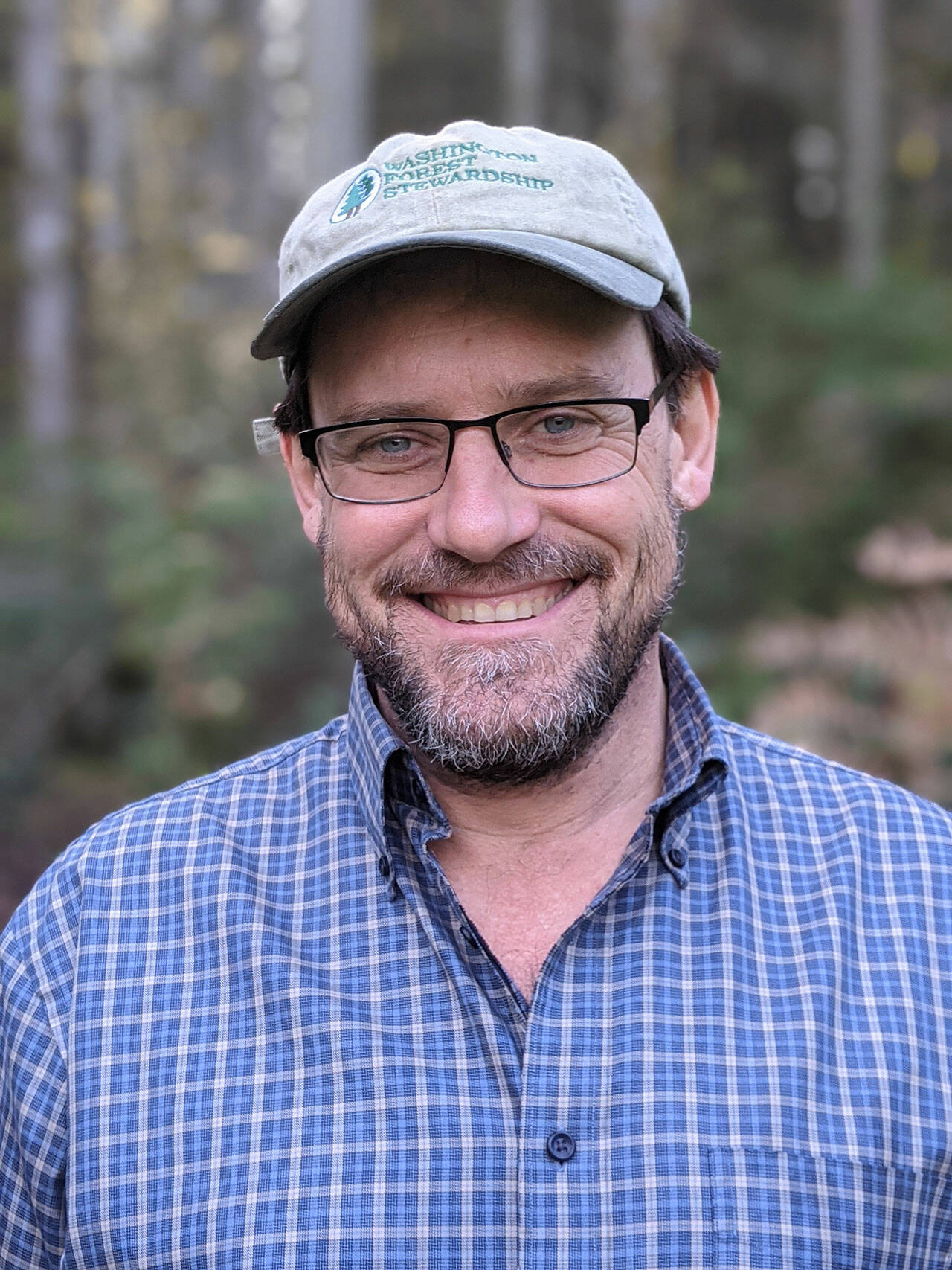In late August, a group of islanders attended a field tour hosted by King County Parks of the planned 50-acre forestry project in Island Center Forest (ICF) in the summer and fall of 2023.
The discussions that occurred on the tour offer an excellent opportunity to reflect on the past, present, and future forest stewardship of ICF — issues that are relevant to all of Vashon’s forests.
First, the field tour affirmed for me that the vision of ICF as a community forest is working 20 years later.
The ICF “experiment” began in the early 2000s when a wide range of islanders worked with King County to acquire the land and collaboratively develop a management plan aimed at restoring a healthy forest and enhancing recreational use, while also harvesting wood in an ecologically sustainable manner.
Since that plan was released in 2006, King County Parks has partnered with islanders to improve the trail network and facilities, conduct multiple forest stewardship projects on over 100 acres, and expand ICF to 441 acres.
For many islanders, ICF has become a favorite place to hike, walk their dogs, horseback ride, bird watch, gather mushrooms, deer hunt, and many other activities, even though they may not agree with every activity occurring at ICF.
The field tour also highlighted the need for adaptation in the face of climate change. Since the 2006 plan, forest stewardship activities have focused on developing older, complex structures such as large trees, snags and downed logs, and diverse plant communities.
This is still a primary goal, but increasing climate resiliency is now an additional objective.
In Vashon’s century-old Douglas fir forests, climate resiliency means increasing trees’ ability to withstand hotter and drier conditions. While Douglas fir is our most drought-tolerant conifer, thinning these very dense forests reduces moisture competition and increases resistance to drought and related insect attacks.
This forest type also stores a lot of carbon. Thus, the 2023 thinning treatments planned on 35 acres in ICF are designed to lower density to reduce drought stress, retain the bigger and healthier trees to retain carbon, and develop old forest characteristics. There will be an immediate loss of carbon, but the forest will be a more stable carbon sink over the next 10 to 30 years that will keep sequestering carbon.
The mature alder-dominated forests (60-80+ years) that occur throughout Vashon present a different challenge. Tree canopies are opening up as the alders slowly die from the top down due to old age, giving way to a thick layer of tall shrubs — a process accelerated by hotter, drier summers. While some of the old trees can persist, it is very difficult for new trees to germinate and grow under the shrubs. Invasive blackberry often takes over.
In terms of climate resiliency, actively managing mature alder forests will sequester more carbon and allow for replanting trees that are better adapted to the future climate.
Similar to the 2014 harvest of alder in ICF, harvesting most of the mature alder is planned on 10 acres in 2023’s work. Alder will be felled and left in the forest on another five acres. A mix of native, drought-tolerant tree species will be replanted. Instead of just planting seedlings from local seed zones, seedlings from warmer and drier regions may be included as part of the planting mix. These plantings will need to be monitored to inform islanders how to best approach this climate adaptation need.
Not managing some patches of mature alder is also important, however, as the snags and shrubs provide nesting cavities and food for many bird and insect species. Across ICF, more than 50 acres of mature alder patches will not be harvested.
The ongoing challenge of local utilization of ICF wood also came up during the tour.
A goal of ICF is to demonstrate that recreation, wildlife habitat, and harvesting wood can be compatible. We all use wood products. Small island mills, however, have a difficult time processing the many truckloads of logs that come from even a small harvest. Island contractors aren’t set up with specialized, low-impact equipment to competitively bid for the harvesting work.
Thus, ICF projects have to be big enough to attract contractors and log-buyers from Tacoma or beyond. While this is still local production, King County is considering doing some very small projects in the future. Either way, the revenue from all ICF harvest projects goes straight back into replanting, invasives removal, and other restoration work.
Foremost, the tour reminded me of the deep satisfaction I’ve gleaned from being part of this community forest for 20 years.
What started as an idea has become a true center of the island thanks to the vision and hard work of many islanders and King County staff. ICF is a place where forests and the Vashon community have grown together in an inspiring direction.
Derek Churchill has been a forester in the Pacific Northwest for 20 years. He has led forest stewardship activities in ICF since 2006 and worked on many other island forestry projects with the Vashon Forest Stewards. He has a Ph.D. in forestry ecology and currently works for the Washington Department of Natural Resources as a forest health scientist.



